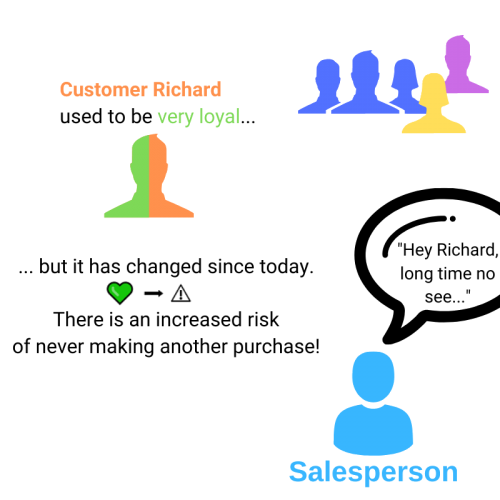CUSTOMER
B2B Automotive trading company, Czech Republic
The customer is a recognized B2B car trading company with EU-wide operations. Its rapidly growing business generates valuable data that are being transformed to an undisputable competitive advantage.
CHALLENGE
Salespeople at the company used to have limited knowledge of the B2B customers they work with. With few exceptions they mostly do remote sales calls. A rapidly changing environment causes also frequent changes in the account management positions. When they used to work with customers as per their best judgement, they achieved average revenue per sales call about €13.
SOLUTIONS APPLIED
1. Behavioural prioritization
We have connected to the purchase history data in the ERP system. Second, we created a connection to the call duration records in the PBX system. We had to clean up the phone numbers recorded in the ERP system. It was quite challenging because the formats varied, were often incomplete, and contained many different other data quality issues. On the other hand, PBX data was very well standardized. It was important to join the records from both systems via the phone number. In this way, we were able to detect moments when each customer was contacted by someone from the sales department.
There are four grades of customers. The best grade is to be contacted each week, while the fourth grade with the lowest priority is fine when contacted once a month. We have created a model that prioritizes the frequency of contacts with customers and also reflects the time since the last known contact.
The most important role played the Purchase Recency (i.e. the time since the last purchase order placed.) A slightly lower importance was given to the total annual Purchase Frequency. Third in the row was the annual Revenue. To someone that can sound surprising. But from experience we know that Recency and Frequency are significantly more indicative of future performance than Revenue. So that was the reason. We also mixed a drop of the Last Contact Recency and total number of calls with the contact in the “cocktail”.
Our model automatically prioritizes customers according to importance and with respect to graded goals.
In order for the result to be useful in practice, we had to take into account both working and non-working days of the week. Therefore, it was necessary to generate a corresponding recommended call plan for each salesperson. The scheduler was set up to find the optimal date, which is the working day of the week, for each individual customer in the system.
All this information was brought to the attention of individual salespeople in the form of daily reports and as an interactive dashboard. Key calculated customer information was also integrated into the ERP and CRM systems used.
With this guidance, salespeople became much more organized than before.
To add a motivating factor, we created a “leaderboard”. Individual salespeople (and management) could see how everyone is doing, who is a little ahead, who is slightly behind and what is possible with how many customers.
2. Predictive product recommendation
A predictive model analyzes past customer behaviour and suggests up to five cars that each customer is most likely to purchase.
The same purchasing history, as described above, was used to “train” predictive models indicating the relevant brands, makes, and other characteristics of cars to be offered.
We used an algorithm similar to that used in eCommerce to analyze the shopping cart.
We have ensured the visibility of recommendations for salespeople when calling individual customers.
3. Warehouse aging and optimization
Aspects of the aging of stored cars and the approaching time to production were mixed into the mentioned model for recommending vehicles for sale. A balance had to be struck between recommending what the customer was most likely to buy and what the aging warehouse had to “get rid of” first.
Salespeople started receiving our model-based recommendations on a daily basis.
They started to work based on scored customers and recommended times to contact them.

RESULTS ACHIEVED
Despite high inaccuracy of the contact list and thus contacting only every second or third recommendation – since then the average revenue per sales call changed to approx. €21.60.
All relevant data processing and calculations take place during the night in a dedicated data warehouse. We use Microsoft SQL Server Standard Edition. This allows us to use its predictive modeling capability (for recommendation models). In addition to the aforementioned integration with ERP and CRM, we also use Power BI for interactive reporting and Microsoft SQL Server Reporting Services for sending daily “instructions” to individual salespeople.
When the effectiveness of the models was demonstrated in practice, not only were the UX aspects redesigned to allow even smoother use of the system, but the recommendation models were also integrated into the self-service online vehicle ordering portal.
2) Get it as a service
providing actionable insights daily.
€ 300 / user / month for a typical client
3) Outsource it completely
to get any custom insights imaginable.
Full service starting at € 30 000